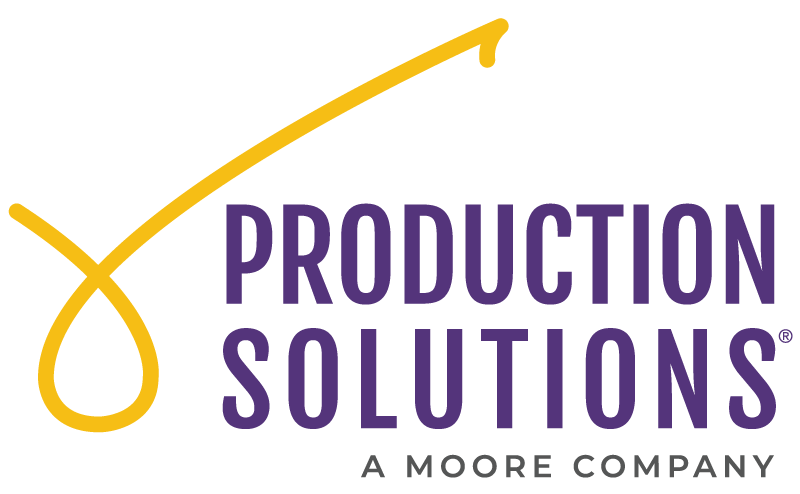Organizational Health – Investing Now For a Better Future
 Production Solutions
Production Solutions
The 2015 DMA Non Profit Federation Conference:
Strategies, Solutions and Results for Monumental Fundraising
Direct Mail continues to generate the largest segment of fundraising revenue, but it’s getting help and giving help that accomplishes the overarching mission of most nonprofit organizations. You’ve got to spend money to make money. Let’s not get into ratios and discussions of gross revenue and net revenue. I’m talking about organization health as in active donor growth, retention and long term value. Is your organization healthy? Are your metrics improving for first year and multi-year donors? Are you moving donors up the value pyramid? The Conference offered nuggets of inspiration, true stories, real time results, wins and losses, sage wisdom– something for everyone. You just had to be there.
The biggest challenge for me was digesting all that was offered. Concurrent sessions with great speakers and content posed a real challenge. Was attending 50% of two concurrent sessions better than attending one session at 100%? I couldn’t tell you, but I do have a lot of takeaways to share. The following recap provides a slice of insight into the organizational adjustments that are starting from within and moving the needle.
Collaboration as the Heart of Organizational Health
The Great Recession took its toll across the board, but if you haven’t already begun digging out and seeing a positive change in your organization’s health, now is the time to get busy. Collaboration is at the heart of the forward momentum, and its intra- and inter-channel. The formerly all-telling question of attribution, or who gets the credit, is taking a backseat in healthy organizations. If you ask the beneficiaries of your organization’s mission, they’ll say the people made the difference; their actions taken made the difference. It wasn’t direct mail, not the web, not Facebook. The collaborative effort of all the channels within organizations big and small is what made the difference.
Collaboration begins “in the war room,” a phrase referenced by David Whitehead, the Sr. Development Officer for AARP Foundation during the presentation Don’t Stay in Your Lane: Case Studies from Three Leading Charities on Integrating Communications Across Departments. CEO Joan Jenkins and he led the collaborative efforts of three unique enterprises in their Drive to End Hunger Campaign, including AARP Membership, Foundation and Services. Success required a change of culture in which multiple enterprises needed to work together. Vision, leadership, shared assets and results, combined with a focus on building relationships from within made the difference. Guiding the fleet was the organizational mission. All boats rose in the tide.
Collaboration in Action
Deploying effective (read: integrated) multi-channel strategies demands adaptive and collaborative approaches. There has to be a shared over-arching mission in which all channels are vested with no room for the ‘set and forget’ approach.
Looking for a simple but good place to start? Capture and record donor information by performing surveys, organizing petitions and creating great customer experiences whenever the opportunity arises. First listen, then respond. When a donor reaches out in any way— requests more infor-mation, expresses a communication preference, inquires about volunteering, clicks through the newsletter, posts a comment, votes on an issue, shares a photo—they’re sharing something big. You prompt, they respond and together it’s a conversation, like two friends. Most importantly, the content of the conversation has to be transmitted across the silos.
As with all healthy relationships, don’t just communicate when you need something. Let your do-nors know you are listening and appreciate their commitment, then disclose what you’re up to without demanding a donation. Include a return envelope of course, but allow a bit of breathing room to cultivate a deeper relationship.
Underlying the discussion of channel collaboration and measurements of success is accurate source coding, which is so very important to the coordination, execution and evaluation of integrated multi-channel testing. If you don’t have the bandwidth internally to evaluate and interpret results in a timely manner, then by all means outsource this very important responsibility.
Results and Tests to Adopt Into Your Program
- Focus on digital centered testing: Channel cadence, mix, timing, testing – what worked last year may not work this year. Happy or sad, static image or video, subject lines- short or long or personalized, closed face or window, morning or afternoon delivery
- Use a story board to define your platforms: Document who is responsible for what and promote consistent understanding across channels. Make it easy to share and use as many channels as is feasible to impact your bottom line. One international health charity measuring revenue between 2009 and 2013 found the LTV grew with the number of channel touches. DRTV was in the multi-channel mix but astoundingly the LTV for 2 channel donors was $345 and the donor with 4 channel touches had an LTV of $1182.
- Try a welcome series: Customize an acknowledgement and welcome new donors in a fresh way to improve first year retention. Make them feel like their gift mattered and you’re speaking to them personally. Inform the donor how their contribution made a definable difference within your organization. Cultivate and invite a two way conversation with the donor, perhaps a donor preference survey in the welcome series. Have you considered a three part welcome series for your most valuable donors—the monthly givers? Do you need to assign this category of giving a name? Test it.
- Don’t give up on that second gift: Although we can hope a different approach will help to acquire a second gift within the first three months, don’t give up if it doesn’t. Be creative and use integrated multi-channel touch points to inform and cultivate. If your donor is acquired via direct mail, do provide incentives for sending their email address. Thank immediately via email, following it up with a mailed thank you and, depending upon the size of the gift, maybe even a phone call. Try a Facebook shout out to the donor for a special gift. The combination of touch points is infinite. Know your audience but also experiment to move the first year retention rate.
- Keep donor retention and renewals a priority: Sure, acquisition is very important to long term growth but as they say, a bird in hand is worth two in the bush. It will cost you more to acquire a new donor, which you already know. Some say the added acquisition cost is actually five times more. So it makes sense to keep the donors you have and cultivate their potential LTV. A few of the special program techniques mentioned during the conference included memorial giving and honor gifts (usually a one-time gift outperforms the LTV of many donors), and challenge goals (with deadlines) to build the Sustainer file, and lastly match and flash sales to incentivize the donor to give again and at a higher level.
One last factoid: Did you know that the average gift for men tends to be higher even though their response rate is traditionally lower? And, if you’re curious, the segment giving the most (regardless of gender) is right around 50 years old. Again, it’s not an either or but rather the mix that will make all the difference in the future health of your organization.
Cheryl Keedy, in appreciation of conference presenters and the DMA Nonprofit Federation, summarized themes and takeaways from the following presentations at the DMANF 2015 Washington Conference:
- Five Accessible Data Points That Really Matter!</s trong> by National Audubon Society, Win-Win Giving, Alzheimer’s Association, Russ Reid.
- Don’t Stay in Your Lane: Case Studies From Three Leading Charities on Integrating Communica-tions Across Departments by AARP Foundation, The Nature Conservancy, Share our Strength/No Kid Hungry, Impact Communications
- How To Grow Your Monthly Donor Program Beyond the First Year by DMW Direct, The Nature Conservancy
- The Joys and Failures of the Holiday Season: What Worked, What Didn’t in Digital and Integrated Fundraising by RedEngine Digital, Special Olympics




